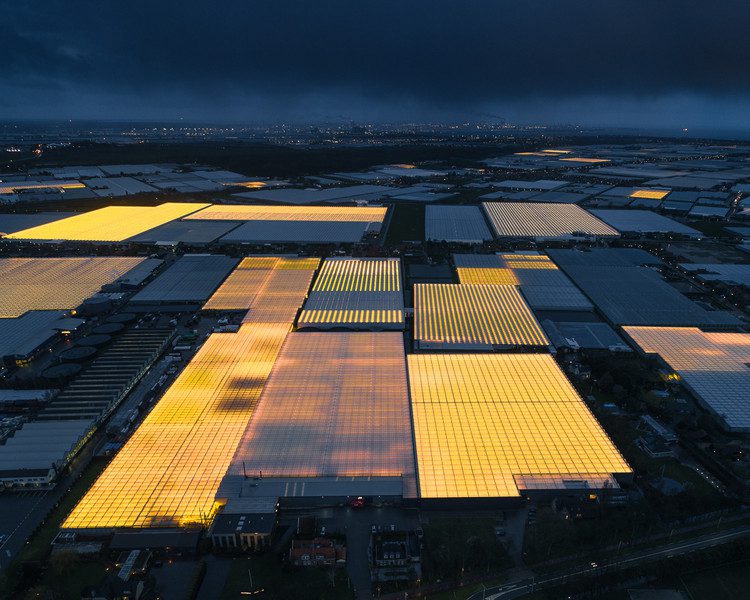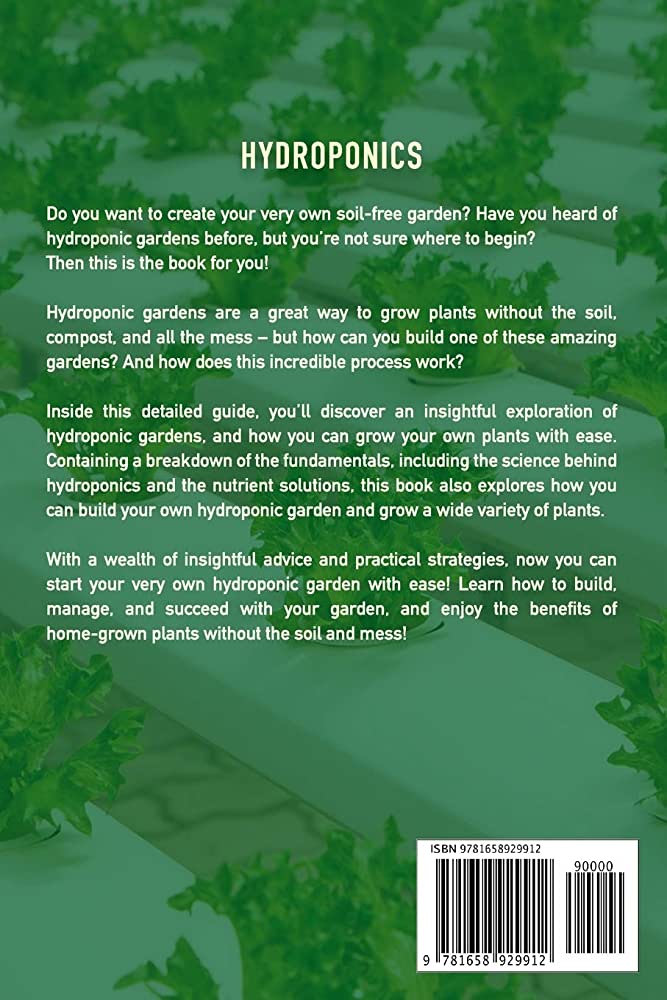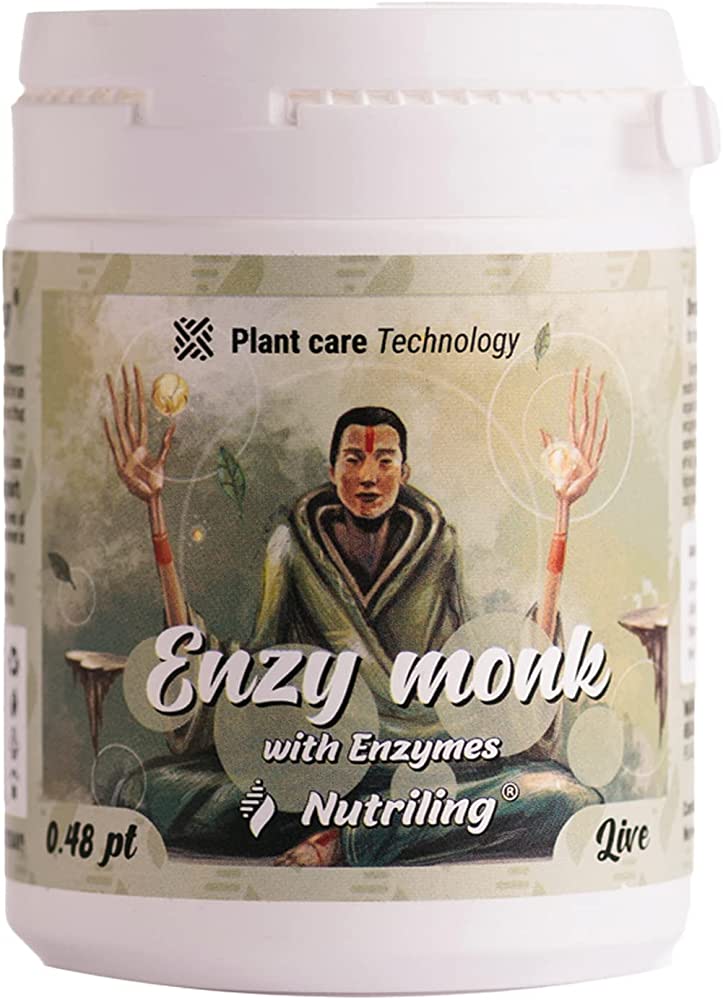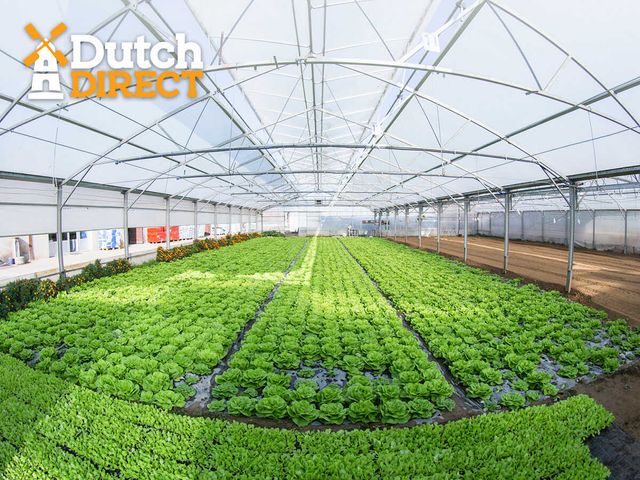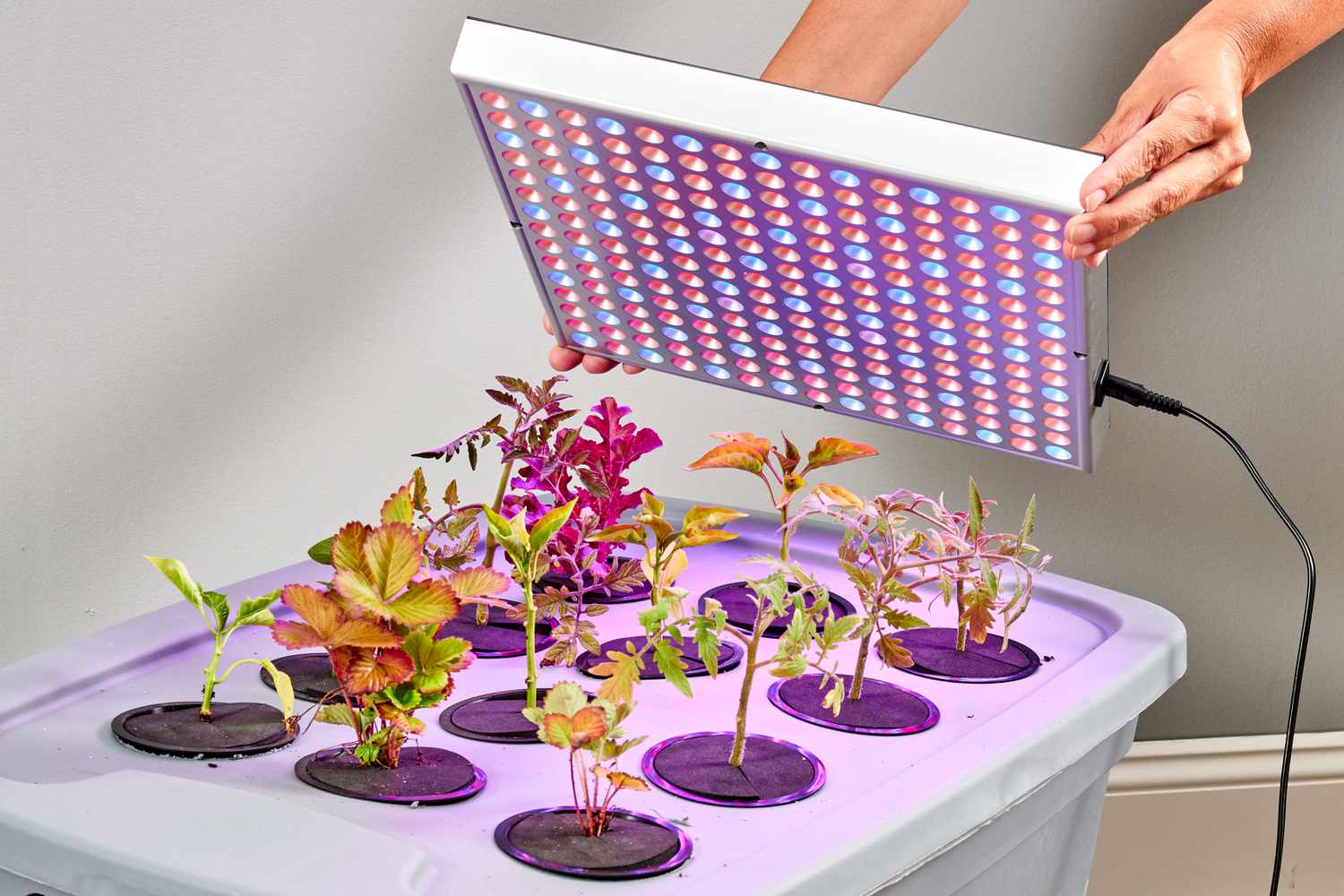Hydroponic greenhouse design and construction involve creating a controlled environment for optimal growth and development of plants through nutrient-rich water and artificial lighting. A hydroponic greenhouse is a system that requires less water, zero soil, and a smaller space for cultivation.
The design and construction process require a proper understanding of the type of plants, climate, and cultivation space. Additionally, the construction process involves choosing the best design plan, selecting the greenhouse materials, and deciding on the hydroponic system. A well-constructed hydroponic greenhouse design allows for year-round crop production, higher yields, and less environmental impact.
In this article, we will take a closer look at the critical factors to consider for a successful hydroponic greenhouse construction.

Credit: urbanagnews.com
Benefits Of Hydroponic Greenhouse Design And Construction
Hydroponic greenhouse design and construction has become increasingly popular in recent years. Hydroponics refers to the cultivation of plants without soil, instead using nutrient-rich water solutions to provide the necessary nutrients to support plant growth. With this method, growers can control the environment in which plants are grown, minimizing the risk of pests and diseases, and producing higher yields.
We will go over some of the primary benefits of hydroponic greenhouse design and construction.
Improved Crop Yields
One of the significant benefits of hydroponic greenhouse design and construction is the potential for improved crop yields. Compared to traditional farming methods, hydroponics allows for a more efficient use of resources (such as water and nutrients), resulting in plants that grow faster and produce more fruit.
In addition, growing plants hydroponically eliminates the risk of soil-borne diseases and pests, which can damage or kill plants in traditional farming.
- Hydroponics allows for up to 30% increased yields.
- Plants grown in hydroponic greenhouse systems have higher nutrient uptake.
- Hydroponic greenhouse systems allow for optimal crop growth, yielding more fruit per plant.
- Reduced crop losses due to pests and diseases.
Reduced Water Consumption
Another significant benefit of hydroponic greenhouse design and construction is that it significantly reduces water consumption. In traditional farming, much of the water used is lost to the soil, evaporates, or gets consumed by weeds. In contrast, hydroponic greenhouse systems recycle water systems, minimizing water usage.
This means that growers can conserve water and reduce their water bills.
- Hydroponics requires up to 90% less water than traditional farming.
- Hydroponic greenhouse systems recycle water for more efficient use.
- Reduced water bills for growers.
- Hydroponics reduces water waste, leading to a more sustainable approach to farming.
Controllable Growing Environment
Hydroponic greenhouse design and construction allows growers to have complete control over the environment in which their plants are grown. This means that variables like lighting, temperature, humidity, and nutrient levels can be managed to ensure optimal plant growth. With this level of control, growers can produce higher quality crops in any season, even in areas where weather conditions are unsuitable for traditional farming.
- Hydroponic greenhouse systems offer more controlled growing environments than traditional farming.
- Growers can adjust the environment to the ideal conditions for optimal plant growth.
- Hydroponic greenhouse systems allow for year-round cultivation.
- Hydroponic greenhouse systems can create the ideal growing environment for nutrient-dependent plants.
Increased Crop Density And Space Efficiency
Finally, hydroponic greenhouse design and construction also leads to increased crop density and space efficiency. Hydroponic systems can be customized to fit the available space and maximize the use of vertical space. This means that growers can solve the problem of limited land availability, making it more economically feasible to pursue farming in urban areas.
- Hydroponic greenhouse design and construction maximizes the use of space by going vertical.
- Increased yield per square foot of growing space.
- Hydroponic greenhouse systems require less space than traditional farming while producing higher yields.
- Hydroponic greenhouse systems are suitable for urban farming as they require minimal land usage.
Hydroponic greenhouse design and construction is an effective way to increase crop yields, save water, create a controlled growing environment, and maximize the use of space. These benefits make hydroponic greenhouse systems the most competitive option for professional growers and even beginners who are looking to produce high-quality crops in limited or urban spaces.
Planning For A Successful Hydroponic Greenhouse Project
Are you interested in starting a hydroponic greenhouse? Before diving into the design and construction phase, careful planning is crucial to ensure a successful project. Here are some key points to consider:
Conducting A Site Analysis
- Identify the available space for the greenhouse, ensuring it’s suitable for hydroponic gardening. A few things to consider:
- Adequate sunlight is essential, so choose a spot with maximum exposure to the sun’s rays.
- Check the soil and drainage; hydroponic growing doesn’t rely on soil but ensuring there is no waterlogging or soil contamination will help in the construction process.
- Proximity to a water source must also be considered.
- Evaluate the climate of the area and consider how it will affect the greenhouse’s temperature and humidity.
- Choose the proper greenhouse materials that can handle varying temperatures and humidity levels, such as polycarbonate or glass.
Budgeting For Materials And Equipment
- Consider the size of the greenhouse, the type of hydroponic system you plan to use and budget accordingly.
- A smaller greenhouse will require fewer materials, reducing overall costs.
- Choose a reliable hydroponic system, and an appropriate backup system to minimize potential disruptions.
- Include the cost of permits and hiring contractors to ensure the proper installation of the greenhouse and equipment.
Choosing The Appropriate Hydroponic System Type
- Research the various hydroponic systems and determine which one is suitable for your greenhouse. Here are some options to consider:
- Nutrient film technique (nft): This is an ideal system for growing small leafy greens and herbs since it requires less space and water consumption.
- Deep water culture (dwc): If you plan to grow larger plants with longer growth cycles such as tomatoes, consider dwc as it is simple, low-cost, and efficient.
- Aeroponics: This system uses mist to deliver nutrients to plants and is excellent for leafy greens.
Designing The Layout Of The Greenhouse
- Sketch out the dimensions of the greenhouse, including the layout, before constructing it
- Include sections for water distribution, electricity and equipment.
- Choose appropriate insulation materials to reduce temperature fluctuations
- Proper ventilation is a must, so plan carefully when designing where to install the fans, doors, and windows.
With careful planning and preparation, a hydroponic greenhouse can be a lucrative project. Remember, designing and constructing a hydroponic greenhouse is a long process, and there are no shortcuts, so take your time and plan thoroughly before embarking on this journey.
Construction And Installation Of The Hydroponic Greenhouse
Hydroponic Greenhouse Design And Construction
Hydroponic greenhouse farming is rapidly gaining popularity because of its advantages over traditional soil-based farming. In this method, plant roots are suspended in nutrient-rich water instead of soil, making it a more efficient and cost-effective way to grow crops.
Selecting The Right Materials
Selecting the right materials for your hydroponic greenhouse is crucial. You’ll need a durable structure that can withstand harsh weather conditions, maintain stable temperatures, and resist pests and diseases. Here are some materials you should consider:
- Galvanized steel frame
- Polyethylene or polycarbonate panels
- Anti-drip plastic film
- High-density polyethylene plastic film
Building The Foundation And Structure Of The Greenhouse
Building the foundation and structure of your hydroponic greenhouse is the first step towards a successful growing season. Here are some key points to keep in mind:
- Choose a level surface for your greenhouse.
- Mark out the dimensions of your greenhouse with stakes and string.
- Begin building your galvanized steel frame.
- Anchor the frame by bolting it to the foundation.
- Install the polyethylene or polycarbonate panels.
- Attach the plastic film to the framework to ensure a secure and stable greenhouse structure.
Installing The Hydroponics System And Irrigation
The hydroponics system and irrigation will be the lifeblood of your hydroponic greenhouse. Here are some points to keep in mind:
- Choose the right hydroponic system for your crops.
- Install pvc pipes for water distribution and drainage.
- Use water pumps to circulate the nutrient solution throughout the greenhouse.
- Use a timer to turn on and off the water pump.
- Install a ph and ec meter to monitor the water quality.
- Customize your hydroponic system according to the specific needs of your crop.
Ensuring Proper Ventilation And Temperature Control
Maintaining proper ventilation and temperature control is essential to the success of your hydroponic greenhouse. Here are some points to keep in mind:
- Install ventilation fans to maintain proper airflow.
- Use an evaporative cooling system to regulate temperature and humidity.
- Install a heating system to maintain an ideal temperature during colder months.
- Use shade cloth or anti-drip film to control light exposure.
- Monitor the inside temperature and humidity with appropriate sensors.
Remember, with attention to detail and careful planning, your hydroponic greenhouse can yield an abundant harvest. Happy growing!
Best Practices For Maintaining Your Hydroponic Greenhouse
Hydroponic greenhouse design and construction has proven to be a revolution in crop farming. But, it’s not just the setup and structure of the greenhouse that matters. The success of the crops also depends on how you maintain your hydroponic greenhouse regularly.
Here are some best practices to keep in mind to achieve optimal crop growth and yield:
Monitoring And Adjusting Nutrient Levels
Nutrient levels are the essential factor that stimulates plant growth in a hydroponic greenhouse. Regular monitoring and adjustment of nutrients are necessary for a good harvest. The following steps can help you monitor and adjust nutrient levels:
- Check the ph level of the nutrient solution frequently.
- Ensure that the nutrient levels are suitable for the stage of plant growth.
- Depending on nutrient testing, adjust the nutrient levels using a dosing pump.
- Monitor the electrical conductivity (ec) of the solution to ensure nutrient balance.
Maintaining A Ph Balance Suitable For Crop Growth
To maintain healthy plant growth, it is vital to have a balanced ph level. The optimal ph range for hydroponic crops falls between 5. 5 and 6. 5. Here are some best practices to maintain a ph balance suitable for crop growth:
- Test the ph of the nutrient solution regularly.
- Adjust the ph if the reading is outside of the ideal range.
- Avoid using strong chemicals when adjusting the ph.
- Dip the ph probe in the sample for at least 30 seconds to ensure accurate readings.
Pruning And Training Crops For Optimal Growth
Pruning and training crops for optimal growth are essential factors in greenhouse maintenance. These practices help to manage the plants’ size, shape, and yield. Here are some best practices for pruning and training crops optimally:
- Remove dead or diseased leaves from the plants regularly.
- Pay attention to the plant stem and clip off side shoots when necessary.
- Train the crops to grow upwards, if possible, to maximize light exposure.
- Regularly adjust ties and trellises to keep the plants secure and growing upward.
Preventing And Treating Pests And Diseases
To maintain good crop production, it’s important to prevent and treat pests and diseases. Here are some best practices for preventing pests and diseases from destroying your crops:
- Keep the greenhouse clean and tidy to prevent pest infestations.
- Use sticky traps to trap flying pests.
- Release beneficial insects like ladybugs to eat harmful pests.
- Use organic pesticides for treatment, as opposed to harsh chemicals.
By following these best practices, you can maintain a healthy hydroponic greenhouse that is conducive to optimal crop growth. Remember, proper maintenance is necessary to achieve a successful harvest. Happy farming!
Frequently Asked Questions On Hydroponic Greenhouse Design And Construction
How Can Hydroponics Be Used In Greenhouse Farming?
Hydroponics is a sustainable method of farming that allows for year-round fresh produce cultivation in controlled environments.
What Are The Benefits Of A Hydroponic Greenhouse?
A hydroponic greenhouse eliminates the need for soil, conserves water, enhances plant growth, and provides greater control over growing conditions.
What Materials Are Needed For A Hydroponic Greenhouse?
Building a hydroponic greenhouse requires piping, pumps, grow lights, a water reservoir, planters, growing media, and temperature and humidity controls.
How Much Space Is Needed For A Hydroponic Greenhouse?
This largely depends on your intended use and the number of plants you plan to grow. A small-scale hydroponic system can fit on a tabletop, while larger commercial operations can occupy vast spaces.
Are Hydroponics More Expensive Than Traditional Farming?
Initially, the cost of setting up a hydroponic greenhouse can be higher than traditional farming. However, hydroponics ultimately produces higher yields and is more energy-efficient.
What Types Of Plants Can Be Grown In A Hydroponic Greenhouse?
Most leafy greens and herbs such as lettuce, spinach, basil, and parsley grow exceptionally well in hydroponic greenhouses. Other crops like tomatoes, peppers, and strawberries can also be grown with the right system setup.
Conclusion
As you can see, hydroponic greenhouse design and construction can be a complex process, but it’s worth it. With hydroponics, you can grow plants all year round, using less water and space than traditional soil-based methods. By paying attention to the key factors of light, temperature, nutrients, and air quality, you can ensure your hydroponic greenhouse is a thriving environment for your plants.
Incorporating the right equipment and technology, such as automated monitoring systems and led lights, can help you optimize your growing conditions and maximize your yields. Remember to prioritize safety and cleanliness during construction and maintenance to prevent contamination and ensure a healthy harvest.
Whether you’re a beginner or an experienced gardener, hydroponics offers endless possibilities for innovation and growth.
- The Power of Mobile Accessibility And Real-Time Tracking for Trucking Operations - November 6, 2024
- Why Ease of Use is Crucial in Trucking Dispatch Software - September 22, 2024
- Better Communication With Dispatchers: How Trucking Dispatch Software Can Optimize Operations - September 7, 2024
